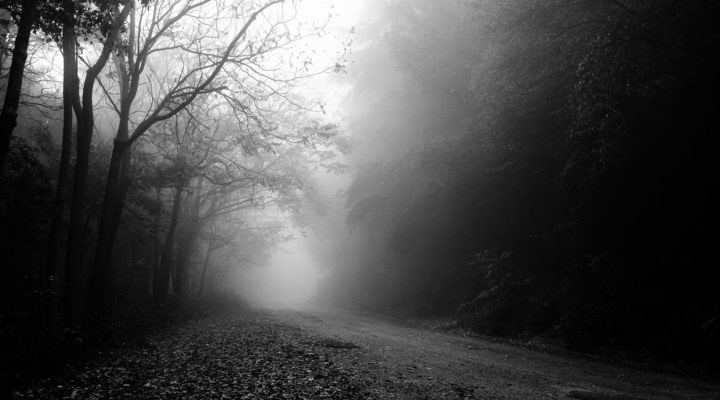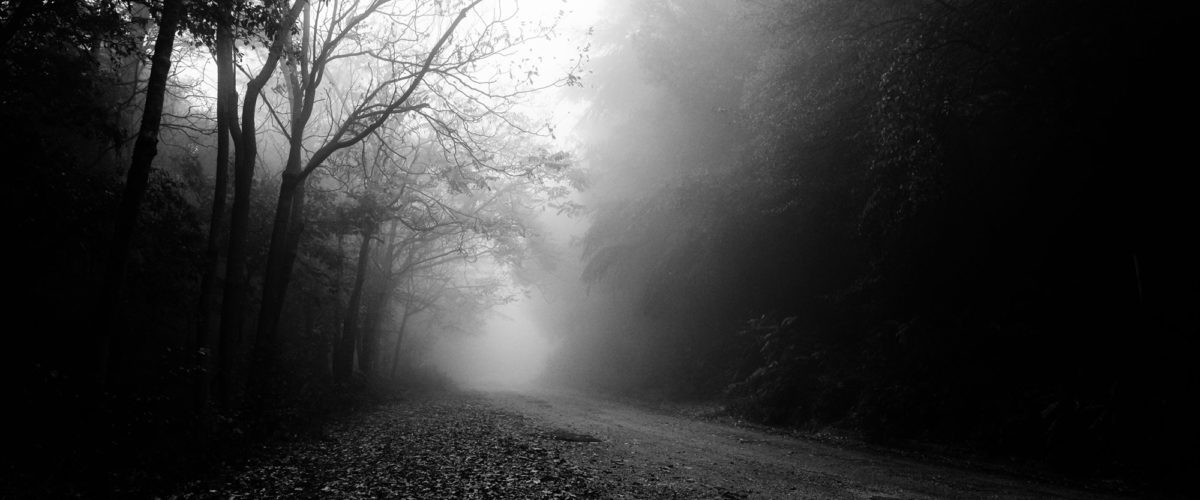I sent my children to Scarowinds last week, and I do not feel at all guilty about it.
Scarowinds is the end-of-season hurrah for Charlotte’s theme park, Carowinds. Staff dress up in Halloween costumes, the park stays open late, and people try to turn their happy amusements into frightening ones. It’s all in good fun for thrill seekers.

Greg Jarrell
Some young adults from the neighborhood took the boys, so Helms and I enjoyed a rare date while the kids rode a bunch of rides whose goal, as my father used to say, is to “turn your liver over.” Success on all counts.
Following the weekend, I managed an afternoon away to catch up to some friends who were making a stop in Black Mountain. Ched Myers and Elaine Enns, both activist-theologians from California, were speaking about their recent book Healing Haunted Histories. Ched in particular has been a mentor for me over the past couple of years, and their work is deeply influencing the way I am thinking about my own project examining urban renewal and the roles and theological understandings of white churches around urban renewal projects.
Ched and Elaine began their talk by noting that Halloween is now the second-most-commercialized holiday of the year, following Christmas. Among the cultural impacts of the capitalist takeover of the holiday is the “trivialization” of the spirit world, they said.
Among the cultural impacts of the capitalist takeover of the holiday is the “trivialization” of the spirit world.
This is not without consequence. What the market has done is to turn ghosts into cartoon characters we can use to entertain ourselves to death. Or, in another manner of dismissing the import of hauntings, people create TV shows and museums about the “paranormal,” replete with tools for detecting sasquatch and yeti and things that go bump in the night. Either strategy trivializes how this land is haunted.
As a result, American culture has yet another manner of avoiding the “actual hauntings of our streets,” Ched and Elaine said. What the settler-colonial project has done is to construct us as people free of history and geography, occupants of a land without ghosts.
“Haunting is one way in which abusive systems of power make themselves known and their impacts felt in everyday life, especially when they are supposedly over and done with,” writes sociologist Avery Gordon. “What’s distinctive about haunting is that it is an animated state in which a repressed or unresolved social violence is making itself known… . Specters or ghosts appear when the trouble they represent or symptomize is no longer being contained or repressed or blocked from view.”
She further writes, “Haunting is one way … we are notified that what’s been concealed is very much alive and present.”
Both Gordon’s Ghostly Matters and Enns and Myers’ new book have become essential companions for me in understanding the history I have been digging around in. I recall, early on in that project, talking with some Charlotte residents about their former neighborhood called “Brooklyn,” which was razed beginning in 1961 as part of the federal Urban Renewal program. We were standing in one of the many acres of parking now there, as they pointed to where stores and churches and homes used to sit. I recall the overwhelming sense that those bleak acres of parking were attempting to entomb some stories that wanted to be told.
This stunning sentence from Avery Gordon helped me make sense of my feeling: “I see that you are not there.”
It is time, in other words, to reckon with the specters of my own place.
In his landmark article “The Case for Reparations,” Ta-Nehisi Coates writes, “What is needed is an airing of family secrets, a settling with old ghosts.” Myers and Enns’ work has been about exactly that, done at personal, cultural and systemic levels. Under their guidance, and with the aid of their voluminous footnotes, I’m stepping cautiously into some stories in my city that want to be seen, but which have until this point remained hidden.
“Once we’ve come to see the old ghosts, our accounts must be settled before they will flee.”
Gordon says that “to write stories of exclusions and invisibilities is to write ghost stories.” Not cartoon ghosts, and not fetishized, made-for-TV evidence of the “paranormal.” Instead, these are stories of “exclusions and invisibilities.” And hauntings, according to Gordon, are distinctive for producing a “something-to-be-done.”
What it is that is “to be done” is not yet clear to me, at least not in practicable terms. Nevertheless, I’m not the one who gets to make such decisions. That may be the most frightening element of ghost stories. They make material demands on our lives, demands beyond what we can control, perhaps beyond what we think we are capable of. But once we’ve come to see the old ghosts, our accounts must be settled before they will flee.
This is in no way trivial. It may be the hardest work many of us have yet encountered. But like it or not, we are already involved. The ghosts are knocking on our doors.
Greg Jarrell spends his days playing, working and conspiring with the family of disciples at QC Family Tree in Charlotte, N.C. His latest book is A Riff of Love: Notes on Community and Belonging.
Related articles:
When we forget our history, institutions do the sinning for us | Opinion by Greg Jarrell
Thoughts on Halloween, saints and souls | Opinion by David Gushee
The return of the witch-hunters | Opinion by Susan Shaw


